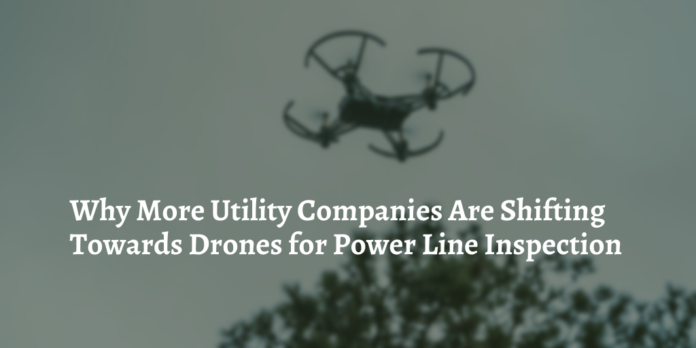As we grow more inter-connected, we also grow more reliant on electricity for our needs. Because of this, utility and power companies need to be thorough in conducting safety inspections.
While they need to time these inspections correctly and regularly, they also need to be thorough as they do it. Maintenance workers must conduct inspections and repairs through different tools and methods.
One such method is power line drone inspection, which uses drones to inspect power lines and electric cables. While widespread drone use is recent, they quickly become a staple in utility and power companies.
How are Power Lines Usually Inspected?
Power lines can pose a considerable risk to the general public if not regularly checked. Many lines are down yearly, often due to damaged components or falling trees. As a result, inspections tend to be performed at set schedules to ensure safety.
Most maintenance workers currently inspect on foot instead of conducting power line inspections using drones. There are three different types of inspection methods that utility companies use:
#1. Drive-By Inspection
Drive-by inspections focus on significant damages, such as loose or damaged equipment or fallen trees.
While directly accessing the power line may be required in remote areas, most drive-by inspections are through vehicles. Maintenance teams can also conduct them with the help of a small flying camera.
#2. Pole/Structure Inspection
Pole inspections look for damage to structures like wooden poles since they deteriorate over time.
Maintenance workers will look for rot during a pole inspection and excavate the ground line area to search for damage. After taking bore samples from the center, they will then use x-rays or ultrasonic devices to assess structural integrity.
#3. Detailed Inspection
This type of inspection often involves a visual inspection at the base of each pole. Maintenance workers will use binoculars to check for pole splits or other signs of damage. Detailed assessments also tend to include climbing inspections.
However, climbing inspections can pose a considerable risk of onsite injury. Companies can mitigate these risks by using a small flying camera to assess damages, like a drone.
Why More Utility Companies Are Shifting Towards Power Line Drone Inspection
Preventative maintenance is essential for the power line industry. Since transmission lines often stretch for several kilometers, they can be complicated to inspect visually for maintenance teams.
The widespread availability of drones for commercial and personal use has allowed them to be indispensable tools in many industries. They are instrumental in utility and power line companies deploying more of them for inspection and maintenance.
These are the biggest reasons why more companies are switching to power line drone inspection:
#1. Increased Work Safety
Climbing inspections pose a significant hazard for maintenance workers. They can fall or risk electrocution when working with live wires. Major problems like loose guy wires and damaged poles can also pose a hazard.
Deploying drones can help minimize onsite injuries for electricians and inspection teams. They can be on the ground safely away while drones fly up and make a detailed inspection.
#2. More Efficient Inspection
Drones minimize helicopter inspections and foot patrols. As a result, they save on carbon emissions and lower costs while allowing inspection teams to be in more places.
A drone power line inspection also frees up inspection teams to assess more power lines quickly. Drones can check for damages in minutes, compared to climbing inspections that take significantly longer.
#3. More Accurate Repairs
Using a drone for power line inspection is more accurate in assessing potential structural damage.
On top of potential onsite injuries, climbing inspections also have a significant margin of error and take plenty of time. However, maintenance workers can check for damages more accurately and make repairs more quickly by deploying drones.
The Takeaway
Power lines without regular checking can pose a significant risk to the general public and maintenance workers. As a result, companies must perform inspections at set schedules.
However, power lines and transmission cables tend to stretch for long distances, making it difficult to scrutinize them. While conducting a power line inspection using drones doesn’t seem like much, it’s a massive step towards efficiency and worksite safety.
This is because drones have significant advantages compared to standard inspection methods. They can be deployed faster and reach critical areas in less time. On top of this, they can conduct visual inspections more accurately and yield high-definition footage for real-time analysis.

